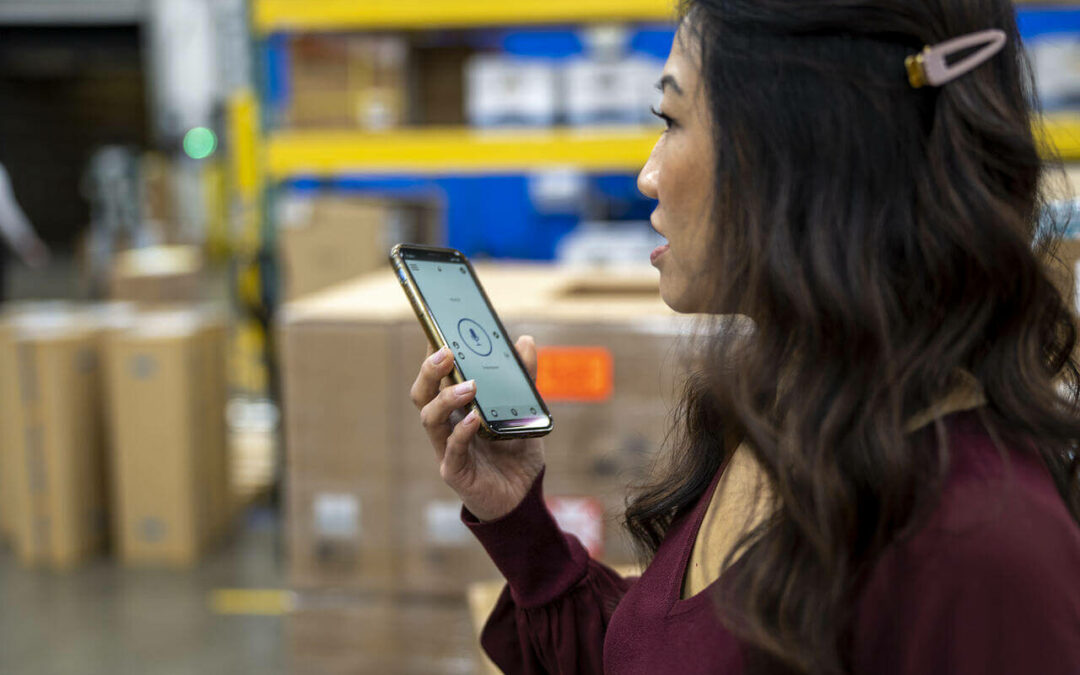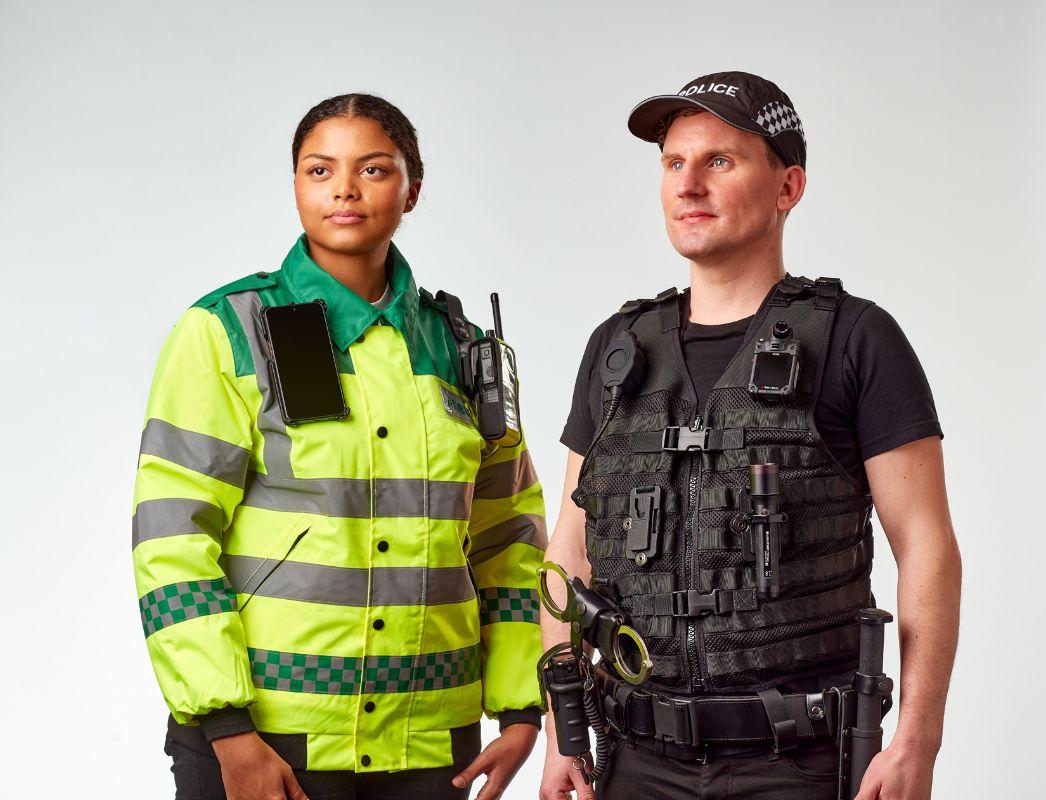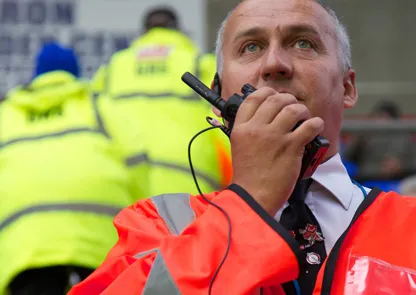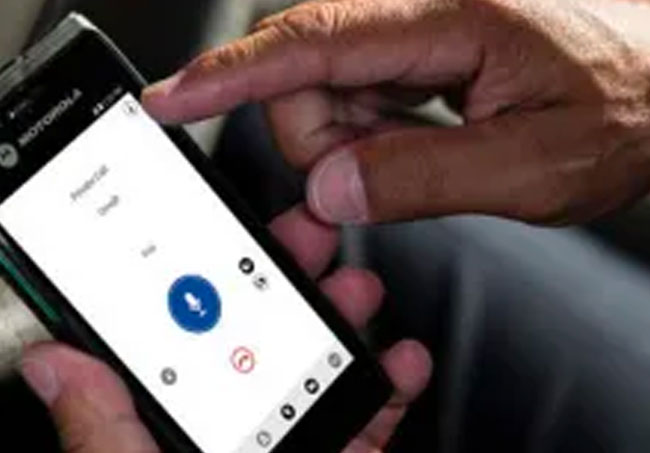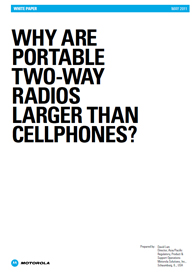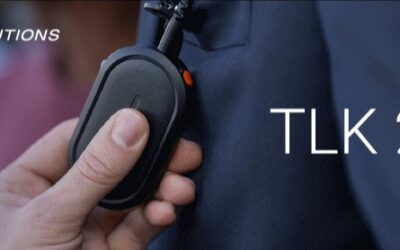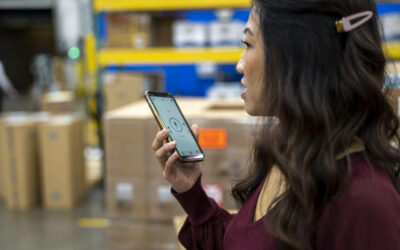Very interesting questions that are often asked are “Why are two-way radios so BIG?” and “Why can’t two-way radios be made as small as mobile phones?” This paper will address these questions and more. While two-way radio devices allow for voice communications just like mobile phones, they are very different than mobile cell phones on many levels. There is a natural tendency to compare two-way radio to cellphones because of how prevalent cellphones have become to the general public globally. This paper will highlight the differences so that you can appreciate the use, utility, and design of two-way radios.
THE DIFFERENCE
One fundamental difference between cell phones and two-way radios is who uses a two-way radio. Two-way radios are used by professionals in the industrial and government areas of society, whereas cellphones are used mostly by consumers. Two-way radios are considered inputs of production, where the use of two-way radio are required as part of the tools-of-the-trade in industry and government to perform their mission or in the production of goods and/or services. Cellphones are one-to-one communication devices, whereas two-way radios are one-to-many communication devices. Cellphones are used for individual calls, whereas two-way radios are used primarily as a communications tool for the organization.
Because two-way radio is an input to the production process or part of the value chain, most industrial or government users will buy the entire two-way radio system and use it internally as a tool, very much like how they procure computers, vehicles, and uniforms for their employees. Because they must procure the two-way radio system as a capital cost to their business, the industrial and government organizations will attempt to minimize or optimize the cost of the system while still meeting their technical and operational requirements. One way to achieve lower two-way radio system costs is to minimize the number of sites inside a two-way radio infrastructure.
Typical infrastructure power output for high power two-way radio systems are around 25-100W. In fact, one of the design philosophies of two-way radio technology is to maximize the coverage area so that as many two-way radios can be communicated with within a given site. This philosophy results in a minimizing of the number of sites.
As a consequence of the high-power radio transmitters, the two-way subscriber radio – the portable – must operate with a much higher power level in order for it to talk back into the infrastructure (talk-in).
Typical power levels are about 1-5W. In contrast, mobile phones are typically 0.6W. Because the cell sizes are larger for two-way radio systems, the talk-in range of the portable radio must be compensated with higher power output…up to a point.
Compared to cellular, cellular networks benefit from smaller cell sizes. A smaller cell size gives cellular systems more capacity. More capacity means more cellular call handling capability, and therefore more revenue. Contrary to cellular design philosophy, two-way radio systems benefit more from larger cell sizes – the larger the two-way radio cell, the better, because a larger two-way radio cell size is able to capture more portable radios to talk to.
Mobile Phones v Two Way Radios form
Operating in rugged, highly industrialized, and possibly hazardous environments, two-way radios require much thicker housings, stronger metal frames and critical sealing from hazardous environments in order to work under such extreme conditions.
Industrial design and operating requirements constrain the radio design to a slightly larger physical form factor, resulting in increased weight, than commercial-grade products. Consumer products and commercial-grade products, such as cellphones and commercial-grade two-way radios, are not designed with these kinds of considerations, so their mechanical designs allow for smaller, thinner, lighter housing designs. The difference is clear: try dropping your cellphone a few times in your office. It will break. Ruggedized industrial-grade two-way radios do not break under normal conditions in industrial
environments.
If the radio is designed to be submersible (yes, actually going underwater), then the mechanical design must also be made slightly larger to cater for special internal sealing in every possible area of water entry. Making a radio that is submersible or workable in a pressurized water environment, like fire suppression operations require more rigorous sealing against water pressure rather than just water entry. This requires special silicone sealing, ultrasonic welding, and high strength bonding materials. All of this requires additional space to add all of this for a good, tight seal.
Another factor keeping the radios from shrinking further are the customer demands for more unique features that cell phones don’t have. For example, two-way radios can be equipped with government grade encryption for voice transmissions that require the highest levels of security. This kind of requirement generally requires hardware encryption circuits, and this adds more circuitry and hardware inside the radio. If cellphones had to meet this kind of sophisticated user requirement, cellphones would be bigger than they are today. Indeed, the more ruggedized the radio is required to be, the larger and heavier the mechanical design of the housing must be for the product. There are a few ruggedized cellphones in the market today and they are larger and bulkier than the majority of cellphones on the market.
Summary
Two-way radios are gaining popularity globally. In the US and Western Europe, where two-way radios have been used since the 1940’s, professional users have always understood that two-way radios are always larger than cell phones. In the rest of the world, where cellphone popularity is more prevalent than two-way radio and was more widely deployed ahead of two-way radio, the size expectation for personal communication devices has been set by cellphones.
It is hoped that this white paper has answered the question of why portable two-way radios are larger than cell phones. The basis for current two way radio design is driven by end-user operational requirements, the environment in which two-way radio must be used in, and the limits of technology. As a leader in two-way radio technology and winner of many technical design & innovation awards, Motorola continues to invest in a wide variety of supporting technologies that contribute to the next generation of digital two-way radio subscribers. Over many years, Motorola has led the two-way radio development with ever-increasing power and capabilities, where a seemingly simple, unsophisticated product are now evolving into an advanced intelligent device that will one day allow for the convergence of voice, data, and video that will support the various communications functions of integrated command & control, workforce mobility, video security, interoperability, and maybe one day even as a extension of a mobile broadband network.
Extracted from the Motorola Solutions White Paper – Why are portable two -way radios larger than mobile phones?
Read the full PDF document here
Talk to us about your MOTOTRBO requirements today –
Book An Appointment | Arrange A Quote | Talk To Us 0800 043 2688







